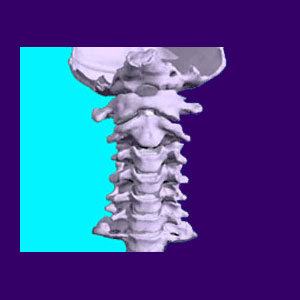
Facet joint neck pain is also sometimes referred to as cervical facet joint syndrome. The facet joints are the areas of the vertebral column where the spinous processes contact each other. These are the bony fins which you can feel through your skin.
The facet joints are often blamed for sourcing what has become known as mechanical neck pain. This is defined as symptoms which result from a particular movement of one spinal structure against another. The most prevalent culprit for enacting facet joint pain is the bone spur. In other cases, pain is deemed to be neurological, since the tiny nerves which control the facet joints may be damaged when the joint deteriorates.
This article will provide an objective look at cervical facet joint neck pain and explain why it is a very misunderstood condition.
Facet Joint Neck Pain from Osteophytes
Almost without exception, facet joint symptoms are blamed on osteophytes that are part of the normal arthritic aging processes which occur in the spine. Bone spurs can grow on or around the facet joints and may actually source symptoms in cases where they interfere with typical joint functionality. This occurs in addition to the wearing away of the protective features of the joint, including the cartilage and synovial fluid. However, in many symptomatic cases, the cure for problematic osteophytes is easily provided through a minimally invasive surgical procedure. In other cases, the simple rubbing of the osteophyte may wear down the spur to the point of becoming asymptomatic in some instances.
In many diagnosed cases, the explanation for the pain is mistaken, leading the patient on a fool’s errand searching for treatment for facet syndrome, when all along, the real source of pain remains undiscovered. Remember, osteophytes are normally found on adult facet joints, since spinal degeneration is universal. Most are not problematic and the vast majority of patients who demonstrate bone spurs will not suffer symptoms as a result.
Facet Syndrome Neck Pain Issues
Cervical pain, also known as neck pain, can be blamed on many structural issues. Although doctors love to implicate degenerated spinal structures as the source of pain, research clearly demonstrates little, if any, correlation between the incidence of chronic neck pain and the usual suspects, including most mild herniated discs, facet joint arthrosis, cervical degenerative disc disease and irregular spinal curvature.
Facet joint pain is certainly possible, but will have well defined symptomatic patterns, including pain upon specific movements and symptoms of a dull achy variety in a localized area. Severe widespread pain and neurological symptoms are not generally associated with true bone spur irritation inside the facet joints, although many patients with just these very symptoms are labeled with the diagnosis facet joint syndrome, due to a partial match in symptomatic expression and lack of other definitive explanatory condition.
Facet Joint Neck Pain Considerations
If your chronic neck pain blamed on facet joint syndrome has not resolved, despite a variety of seemingly appropriate and indicated therapy options, I urge you to save yourself by reconsidering the validity of the diagnostic conclusion. In most cases, this is the first step to actually recovering from your pain.
Facet syndrome is a highly controversial diagnosis, since the incidence of osteophytes on the facet joints is so common, especially as we age. Pain from these spurs is rare and is often mistakenly linked to the coincidental structural incidence.
I have seen the diagnosis of facet syndrome made by an orthopedist many times. The patient typically undergoes various conservative care modalities and eventually has the surgery which removes the offending osteophytes. Less than half actually enjoy pain relief. Meanwhile, a great number of patients do find facet joint relief when the diagnosis is repudiated by a chiropractor or physical therapist, usually citing soft tissue conditions as the source of the symptoms. These patients enjoy better curative results.
Remember, facet deterioration can be just as much of a scapegoat condition as any other spinal diagnosis. It can also be a contributor to pain or an exclusive cause of suffering in less common scenarios.
I recommend getting several opinions from a variety of care providers before seeking any treatment. Be especially careful if your symptoms cover a large area or are severe. This is a possible indicator of an iatrogenic blunder in the diagnostic process.





